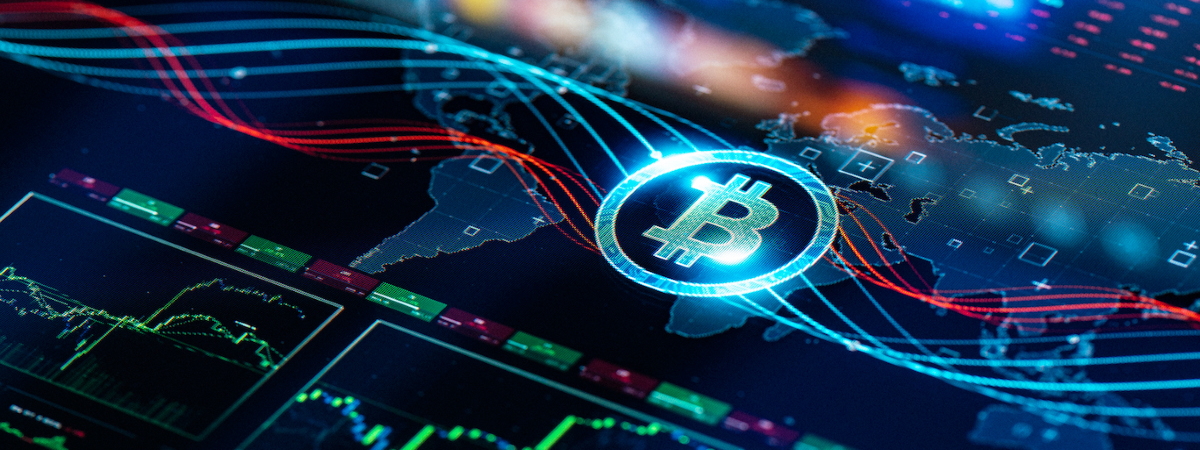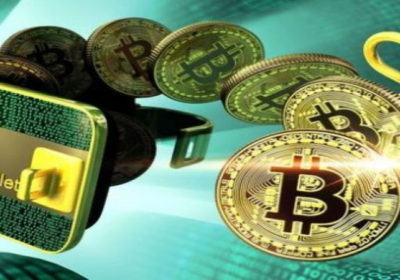
The current economic model that governs our society is far from being the model we would all like to have as a basis for dealing with any of the crises and economic catastrophes we have experienced throughout our history. It is true that we have been creating this financial, banking and monetary system over the years, building its different pillars on the basis of supporting what was falling on the one hand, or shoring up something that was not working well on the other, in a trial and error method often sponsored by different political and economic visions when deciding how to deal with monetary flows, the world balance that is necessary for the global economy to function, and the needs of society when managing its assets and financial resources.
But, due to extreme situations such as the pandemic generated by covid-19 and the need for one third of the world’s population to be confined to their homes for several weeks, it has created such a standstill in the world economy that no theoretical system is prepared to deal with a situation that has arrived suddenly, and that each country is managing separately as best it can. Since the internal monetary policies of each nation are in the hands of the governments of that nation, each economic and financial stimulus that is being implemented, or each measure that has been taken according to the critical situation of each place, has had different consequences, reactions and has been able to palliate, or is trying to palliate, the effect that in each region of the planet this situation of total or semi-total economic standstill is having on the planet.
Doubts about the convenience of maintaining the current economic system
Therefore, economists such as Amit Kapoor and Chirag Yadav of Stanford University are beginning to seriously consider what would be the universal model to implement if we really want to build another way of managing our financial networks and the exchange of currencies, payments and charges for services in the global economy on a large scale, and whether such a model really exists or can be developed.
To that question, proponents of alternative models based on the so-called cryptoeconomy are making their voices heard. A decentralized system, they propose, is what can prevent the entire planet from sinking and collapsing if there is any chance of an event like the one we are currently experiencing happening again.
Why a decentralized system? Because it is precisely the excessive interdependence of the current structures, the macro connectivity of everything with everything and globalization that cause that any small problem in one part of the world ends up causing enormous problems to all the others. It is clear that a globalized and hyper-connected system has many advantages, and keeps all countries and national economies functioning through interoperability with each other, but, as is being discussed, it is the first thing that causes that, as if it were a house of cards, when a single card falls from the base, the whole structure falls.
Decentralized systems based on disruptive technologies
So, back to the analysis of the decentralized systems proposal. What are they really and what are they based on? They are based on a disruptive technology appeared and developed in the last ten years known as blockchain, or block chain, where each individual is a “node” of the blockchain network, which is nothing more than a computer protocol that is installed on computers at each “point” where there is a person who wants to be part of this exchange network, and, from there, the blockchain network can be used to send and receive peer-to-peer payments, person to person, without going through any coordinating node, central authority or regulatory body, as banks are now, that can control, authorize or not authorize, block, limit or delay the management of sending and receiving currencies, in this case virtual currencies, which are the “token” or unit of exchange between these users.
In a way, what decentralized models propose, and this is how the blockchain networks of the best known cryptocurrencies such as bitcoin or Ether already work, is that all the nodes of the network control and manage all the transactions, storing them in a huge database that is replicated in all the nodes at the same time, so that the whole system guarantees the stability, reliability and robustness, as well as the veracity of the economic transaction carried out.
A system that is, in principle, fail-safe
Although the technical part is rather more complex than this small explanation we have given, what interests different economic analysts and proponents of a change in the current model is the creation of a structure, based on digital, encrypted and decentralized technologies, where the robustness of the system is ensured by the individual robustness of the information that circulates through them, the chained blocks, and where there is no central authority that can “fail”, causing a generalized collapse in all the others that depend in chain on this one.
This is precisely what is now happening in our world economy. When the American bank Lehman Brothers failed in 2008, it dragged with it a whole set of companies, institutions and other banks that depended on, were linked to and had made transactions with LB and where all owed money to all, all were interconnected with all and all were partly to blame for having put the world economy at risk when the subprime crisis broke out. On the other hand, now, in this 2020, there is simply no bank that has put the economy at risk on its own, it is that humanity has stopped its activity all at once, to contain the contagion of the virus, and, therefore, absolutely the whole system collapses when the pistons that make the monetary flow move daily from Tokyo to Ushuaia passing through Belgrade stop.
A process that already started some time ago
On the other hand, the idea, as such, of installing a system based on blockchain nodes is not new to the current banking system. The Industrial and Commercial Bank of China, ICBC, the world’s largest lender by assets, has been researching and exploring the integration of blockchain with big data, artificial intelligence, the Internet of Things and 5G technology since 2016. And the fact is that blockchain protocols are not only used or can be used for everything related to cryptocurrencies, payments and money transfers in digital and encrypted format, but also serve to encode huge amounts of data in an unaltered form, They serve to generate smart contracts managed by the nodes themselves and their software and serve to create trust and a certain anonymity among those users who are part of it and who are the ones who trust, so to speak, that the management of the blockchain itself, which is performed simultaneously by all the nodes of the network, will always keep the system running and without the possibility of collapse, failure, manipulation, etc.
For those who perhaps have not delved into this computer world now focused on the new economy, it may seem that the model is not a panacea either, since many of the things it aims to offer can already, somehow, be obtained with traditional banking systems if we manage to make several changes in them with everything learned after these economic crises, which are coming along our history unfortunately every few years.
And that seems to be what many banks and financial institutions are starting to evaluate. There are already projects in major banking institutions to incorporate blockchain technology into their current processes. JPMorgan published in February a report with the outlines of its strategy to incorporate this technology into its infrastructure, combining its Quorum network with ConsenSys, based on the Ethereum blockchain, another widespread protocol and cryptocurrency. Perhaps not because they are going to join a bitcoin or similar network to buy or sell, speculate, with these cryptocurrencies (which they may be doing), but because they see the future and the potential that encryption and encoding can have in an unalterable database and that is safeguarded from all kinds of attacks and possible manipulations as it is replicated and shared by all the nodes of the network at the same time, and where all of them, presumably other banks, will approve and control all transactions on the blockchain itself, making the system safer and more robust than it is now, since currently it is payments through SWIFT systems, for example, or through the connection with VISA or MASTERCARD type payment companies that act as intermediaries between purchases and economic transactions of human beings and businesses and companies, with banks and institutions where those payments are finally stored.
The idea is, therefore, to remove intermediaries, and make all economic transactions go from user to user but passing through the central node that will be the bank reconverted into a cryptobank.
Implementing new technologies to reconvert the entire global financial system.
This means that although we are seeing a boom of people moving towards the use of bitcoin, Ether, Monero, Tezos and the hundreds of other virtual currencies that exist, their blockchain networks are going to be left out of the economic transition that the global banking system is going to carry out, since it will be the world economic system itself who, predictably, will end up “stealing” the blockchain technology born to flee from the current centralized banking systems, and become themselves decentralized banking systems, to a certain extent, but adapted to the “new times” and new technologies.
What will happen then to our savings and deposits?
In principle, nothing, at least the models and proposals of those versed in the implementation of these technologies who see as a safe bet the shift towards a global banking blockchain system, tell us that all current national currencies and currencies will become their digital and encrypted counterpart. The European Central Bank (ECB) initiated in early January a study of the risks and benefits of creating a “digital” euro currency. That is, instead of entering our bank app to see how many euros we have, what we will see will be the balance in “cryptoeuros”, and when we go to the bar to pay for breakfast with our card or mobile, what we will be doing is paying with a cryptocurrency app connected to our “crypto” account of our usual bank, and the two cryptoeuros that breakfast is worth will be deducted and sent to the “cryptoaccount” in cryptoeuros of the bar where we had our coffee. That is, completely transparent to the user, because it is the same methodology and way of life to which we are accustomed so far, but with a completely different backend in terms of the technology behind the systems of charging and sending money from one to another.
It is clear that this type of technology will eliminate many intermediary systems that now exist, and that of course take their commission for connecting users, merchants, banks and companies, such as the companies that control the debit and credit cards we have mentioned, but other systems such as PayPal may be ousted, or the SWIFT system of interbank payments itself will no longer be necessary under a blockchain management system in a few years.
Therefore, it seems certain that this type of technology and global reconversion will be used little by little, especially if the exit from this economic crisis that we are currently experiencing takes longer, or if it does not find a way to recover quickly, so that the entire population of the planet can return to a certain “normality” in terms of stable income, functional jobs and a functioning economy after several months of standstill.
Will the current cryptocurrencies continue to exist?
Probably yes, their enthusiasts so maintain, sustain and promote them, because they really are beyond the regulatory reach of current systems, even though multiple laws are evidently already being introduced to tax the profits to be made from speculation, payment and collection with cryptocurrencies in the annual income declarations that we all must make in the countries where we live. But despite the fact that bitcoin and any of the other cryptocurrencies may continue to work, the truth is that if the world banking system is reconverted to the same technology that gave rise to this first global cryptocurrency, almost all of humanity will not have to make any effort to move from one economic system to another, since its own bank will be the one to make the reconversion of the entire computer substratum, the reconversion of their euros or dollars to their “crypto” equivalent, and it will be, simply, a “technical” change that for most people on the planet will not have any importance and it will not have been worth their while to find out what has really changed in the bank that now its app has a new version where what it says is “send cryptopayments” or receive “cryptocurrencies”.
Little will society protest if this is carried out in case they do not feel comfortable with it, since it does not imply an alteration of their usual methods or systems for managing or saving their economic resources.
Now, could all banks be cryptobanks?
Possibly not, in fact, many banking entities that will emerge quite weakened from this economic situation will possibly try to merge with others that will have withstood the pull better, something similar to what we have seen all these years ago where there have been fewer and fewer banks, and where entities such as the old savings banks disappeared completely to be absorbed by them, where one bank bought another, where two or three financial entities merged with each other, etc. This will happen again, so perhaps, in each country, there will be three or four main banks that will become the macro nodes of the nation’s financial management blockchain network, and, from there, the national blockchain networks will be interconnected with each other with “pass-through” or exchange nodes that work perfectly between the cryptobank where I have my savings in Spain and the cryptobank where I have to send a payment in New Zealand. That is, exactly the same as now, but with another technology and another “digital” and “encrypted” interconnection in an unalterable blockchain where all the banks in the world have a copy of all the transactions that are made around the world.
A privacy issue?
Sure, this can already ring all alarms to those who see a major invasion of privacy, can all banks in the world check and have copy of my transactions? Yes, but no, that is, all transactions in a blockchain are encapsulated in blocks and to ensure their reliability all nodes keep a copy of that same block, so there can be no disputes between two nodes where one says that the payment was 10 euros and another says that the payment was 50 euros, since 100% of systems around the planet can see that it was 10 euros, for example. But that won’t be necessary, because all transactions are encrypted so nobody can really see anything and nobody can know if you paid 10 euros or 50 euros to the person in question, since only you as the sender and the other person as the receiver have the information in your private accounts. The rest of the process is managed by software that replicates the blocks with the transaction information so that they reach their destination and the stability of the system is maintained.
So, from this point of view, there is no invasion of privacy possible, and the network is protected by a double key system, a public and a private one that only the user of that transaction can know. Technicalities aside, it is not a security problem that can lead to concern the citizen, if that is what worries him, but simply to let him know that there will be a new way in which the international banking system can work and how it is intended to get to do so through the implementation of this technology.
There is still a long way to go before we see this situation implemented, many mergers to be seen, many attempts to shore up the global economic system again after this recession and different opinions on how to do it. What seems to be clear is that the proponents of cryptocurrencies as an alternative to the current system are trying to make their voices heard with increasing intensity, and we are seeing how all financial institutions are interested in learning and implementing blockchain technology, so we can expect to see more and more progress in this direction, and the possibility that in a few years there will already be a bank converted to a cryptobank and starting to operate fully as one of the first nodes of the new global financial and crypto-globalized network of the planet.



